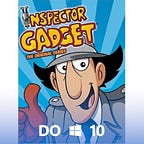COVID Represents Only the Start of Health Chatbots’ Rise
Barely a week of the COVID crisis goes by without a government or major health organization launching a chatbot to help in the information and business recovery effort. For the immediate future, bots will play a key role in public health awareness, and at the personal level in health checks and as mental health companions, with health bots estimated to be worth $700 million by 2025.
Chatbots got a big lift in IT and business circles during the early weeks of the COVID crisis. They helped provide a worrying public with honest information and answering their questions at volumes that no call centre could manage, launching in days not weeks, and proving that most bots can happily work without AI bells and whistles to deliver key benefits.
Now we are, hopefully, past the peak of the virus, the need for bots is maintaining a solid pace. New government and health service advice bots continue to pop up around the world. While existing or new bots help those in quarantine or isolation like Replika, a bot that’s just there to listen. “Half a million people downloaded Replika in April. Traffic to the app nearly doubled. People were hungry for companionship, and the technology was improving, inching the world closer to the human-meets-machine relationships portrayed in science-fiction films.” according to the makers.
There are already a host of buddy apps and mental health partners out there helping people through tough times. And the newer bots are increasing in realism and empathy to add value, and feel more valued to those in need.
Chatbots for the Older Audience
While the trendy bots might focus on the younger digital audience, there are also autonomous partners for older users, Older folk are already used to using text messaging to keep in touch with their family and friends. Lena is a new bot that helps keep people engaged and communicating when there’s no one around.
Lena provides virtual companions that provide support and guidance to seniors facing health challenges, be they in-and-out of hospital, in care homes or trying to fit into a retirement community. Lena uses natural language processing (NLP) to interact with patients, providing chat and engagement, and helping assess them, be it on their pain levels or if/how meds are used.
Based around Houston, Lena has already worked with around 1,200 older people, achieving 60% engagement and increased attendance at health and fitness classes by 30%. Another partnership with Houston Methodist achieved a nearly 80% opt-in rate and 90% weekly engagement rates.”
Back at Work With Chatbots
After the impact of lockdowns and furloughs, governments around the world need their workforce to go back to being productive. Chatbots are being used globally to help in situations where people might not be totally understanding of the risks.
That’s especially true of migrant workers, and one bot is leading the way in reminding them to take steps to good health in Singapore. These workers sleep in dormitories, have limited access to medical facilities and there are language difficulties to overcome.
With millions of migrant workers setting back out into the world, this example highlights how bots can be used with multilingual skills to provide governments and health workers with data, and inform workers on how to stay safe. The same setup could be deployed on vessels, large mines and other facilities where workers need regular reminders and digital alerts can ensure people take the right steps.
The value of the bots, the savings if they can prevent outbreaks of COVID or other illnesses and their benefit in assessing and helping people with mental health issues, is a major asset. That’s why research estimates a healthcare chatbot market value of $703 million by 2025. That’s good for vendors and tech buyers, but in the healthcare trenches, every life saved, illness avoided and family tragedy spared is great news. While there are plenty of healthcare market-specific chatbots from the notorious Bablyon Health to many for specific illnesses or conditions, any business can create a chatbot to handle providing up to date health information to workers. The likes of SnatchBot are free to use, require no coding skills, and can be updated instantly with the latest news.
Naturally, any health advice or bots that deal with mental health need to be fully tested and approved to be fit for purpose, but the technology itself is growing fast to help with all types of conditions, allowing health workers to focus on the critical cases.
